In a perfect world, our refrigerators would be well-stocked bounties of flavorful and interesting meals. In a more perfect world, those meals would be healthy, balanced and created with a very intentional nod to creative flair.
Emily Scott, West Chester’s Wildflower Chef, is all about making that ready-to-eat magic happen. “Menu planning is my job. Cooking multiple meals for multiple families with multiple allergies is what I do every single week. Yet in some ways, the reluctance to plan is a foreign concept to me because I am always thinking about food and my next meal! Food should be something to look forward to and get excited about.”
What are Chef Emily’s tips for the time-crunched and the less-inspired? She offered us her insight to make the daunting task of keeping ahead of the mealtime blues easier.
Getting Started with Meal Prep
Grocery shop on a different day than you do your prep work. “Grocery shopping is exhausting—I should know! My favorite time to go is super early on a weekday—you’ve got the store to yourself,” says Chef Emily.
Don’t worry so much about having the proper containers, a la Instagram meal prep. “I use covered glass bowls and resealable bags to quickly prep and store food.”
Let the seasons guide your ingredient purchases, and don’t be afraid to try something new that you’ve never had before. “I’ve made some really terrible dishes at home when I first started experimenting with things like kohlrabi and dandelion greens,” Chef Emily confesses. The point is to keep on experimenting.
Another tip for staying seasonal: sign up for your local farmers’ market’s email blast so you know what’s going to be available that week and can start thinking about what you’ll buy.
No matter which containers you use, label and date the food clearly so you can safely and easily enjoy the fruits of your labor.
Buy organic ingredients. You’re taking the time to cook meals at home, and you’re saving money by not eating out—now use that money to buy the quality ingredients your body deserves!
Instead of picking meats/proteins first and then following up with vegetable side dishes as an afterthought, focus on your vegetables first. Find an awesome recipe that uses a vegetable in an interesting way, like a butternut squash baked fritter or a shredded zucchini salad, and add a simple protein like baked chicken or shrimp. Starches and proteins are easy—give your veggies some love!
Common Mistakes
“Home chefs often overestimate how much time they’ll actually want to spend doing this each week,” notes Chef Emily. Start off simple and plan for 3-4 recipes on the weekend, plus some really simple tasks like baking a sweet potato in foil or cooking a big pot of rice for the week.
Don’t think that meal prep means that you have to make full-out meals for every night of the week. “I never make full-out recipes ahead of time when cooking for myself,” she adds.
Step-by-Step “Tricks of the Trade” to Make Meal Prep Easier
- Pick your recipes, make your grocery list and shop the day before your prep day.
- Start by prepping all of your vegetables: wash, chop, dice, and so on.
- Get started on any recipes that will take the longest amount of time, like roasts or stews.
- Always label and date your food. (Chef Emily uses Avery labels—they can be easily removed from glass and most plastic. The key is to not get them wet before peeling them off.)
- Never get too hung up on your recipes. If you can’t find an ingredient, ask someone in the store for a recommendation for a substitute. If you forget to buy something, forge ahead and make it work! Don’t get frustrated—it’s just food.
- When planning a bunch of dishes at once for the week, you have to think about what types of dishes you’re making. For example, you don’t want to make multiple dishes with seafood because seafood should be eaten fresh or within one day after it’s prepared for best flavor and quality. Here’s how Emily usually plans meals:
- Day 1: entree with fish/seafood
- Day 2: entree with beef/pork
- Day 3: entree with chicken
- Day 4 and beyond: vegetarian dishes or things like soups/stews (they’ll hold up the longest).
One final note: Don’t keep leftovers longer than six days in your refrigerator. Freeze things if you won’t get to them in time.
Tips for the Procrastinator
To make your life easier, whenever you are in the kitchen making something, make extra. Making a vinaigrette for tonight’s salad? Make enough for 6 servings and save it for later. Baking sweet potatoes? Throw in an extra 6–8 and enjoy them for breakfast, lunch or dinner for days to come. Chef Emily notes, “I never cook just enough food for that night. I cook lots of extra—it’s so much easier than having to cook that same thing another night.”
Stop being a square when it comes to meals: there’s absolutely no reason why “dinner” should have to be a meat, starch and vegetable. “Some of my favorite dinners are salads with beans, vegetables and quinoa; veggie hash/scramble (any vegetables/potatoes I have on hand, any spices I’m in the mood for); sauteed vegetables with a veggie burger, homemade or otherwise; and pasta with avocado, spinach or kale and pumpkin seeds.”
Remember, too: meatless doesn’t have to just be for Mondays. Vegetables can be so much quicker to prepare than meats.
Take advantage of the season. In late spring and early summer, marinate vegetables and beans. Make a simple vinaigrette, mix up whatever is on hand and in season and enjoy for the next 5–6 days. Try different spice and herb combinations so you don’t get tired of it.
Salsas are another great idea for summer. Try adding different veggies and herbs for new flavors. Hummus is also one of Chef Emily’s favorites. Make a big batch and enjoy dipping all those great farmers’ market veggies in it all week long.
The rest of the year, when the weather turns cooler, Chef Emily makes use of roasted potatoes and sweet potatoes, prepping enough for 5–6 days at a time. Big pans of roasted vegetables can be thrown into salads, added to eggs, mixed into rice, served over quinoa … The options are limitless, so prep enough for 4–5 days.
During the cooler months, big pots of brown rice, quinoa, millet or lentils will also serve chefs well through the week. Hard-cooked eggs are perfect for throwing on a salad, in a sandwich or mixing into potato salad.
Go-Tos for a Well-Stocked Pantry
If possible, try to keep your pantry stocked with these items. You’ll find yourself turning to them throughout the week to help you pull together a meal:
- Coconut milk, oat milk
- Canned garbanzo and black beans
- Lentil pasta, brown rice pasta
- Nut butters, tahini for dressings and sauces
- Seeds: pumpkin, chia, hemp, sesame, sunflower
- Frozen vegetables (for when you don’t even have time to chop vegetables)
- Organic veggie burgers (homemade or store-bought)
- Avocados—“because they just make everything taste better”
Chef Emily’s last bit of advice? “You can’t be perfect every time. Just get into the kitchen and try. You will get better and it’s worth it.” Go forth and start planning!
Visit The Wildflower Chef website to learn more about Chef Emily’s personal chef services and boutique catering options. Find more inspiration by subscribing to The Wildflower Chef newsletter and following along on Facebook, Twitter and Instagram.
Contact Chef Emily online via The Wildflower Chef website, by email or by calling (610) 715-8159.
- Photography: Alexandra Whitney Photography
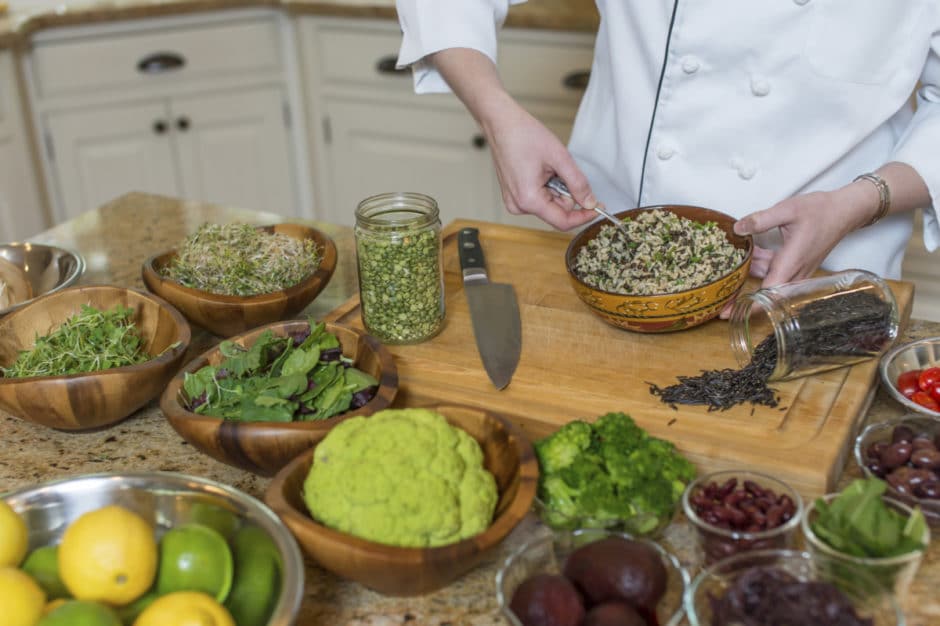
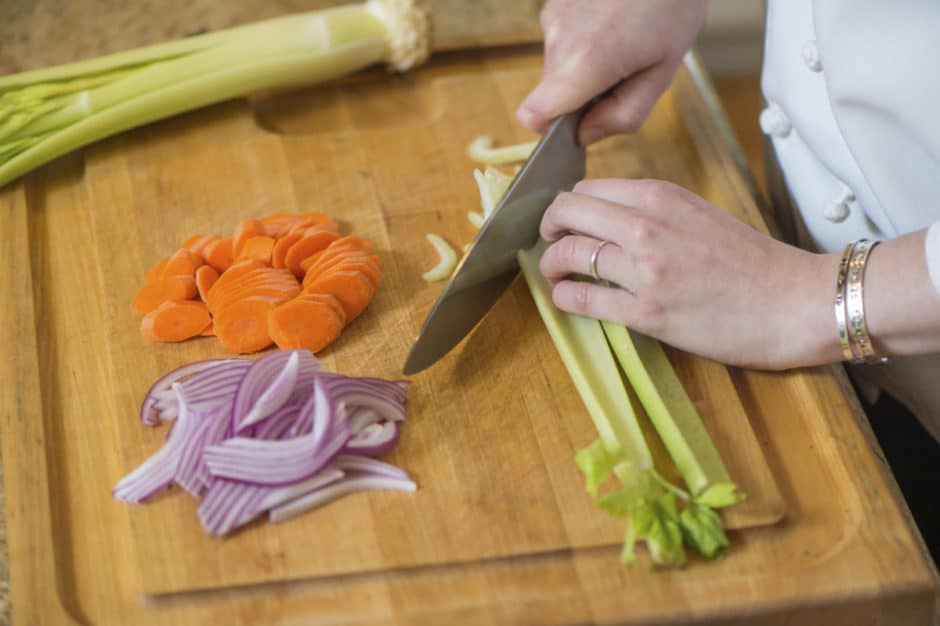
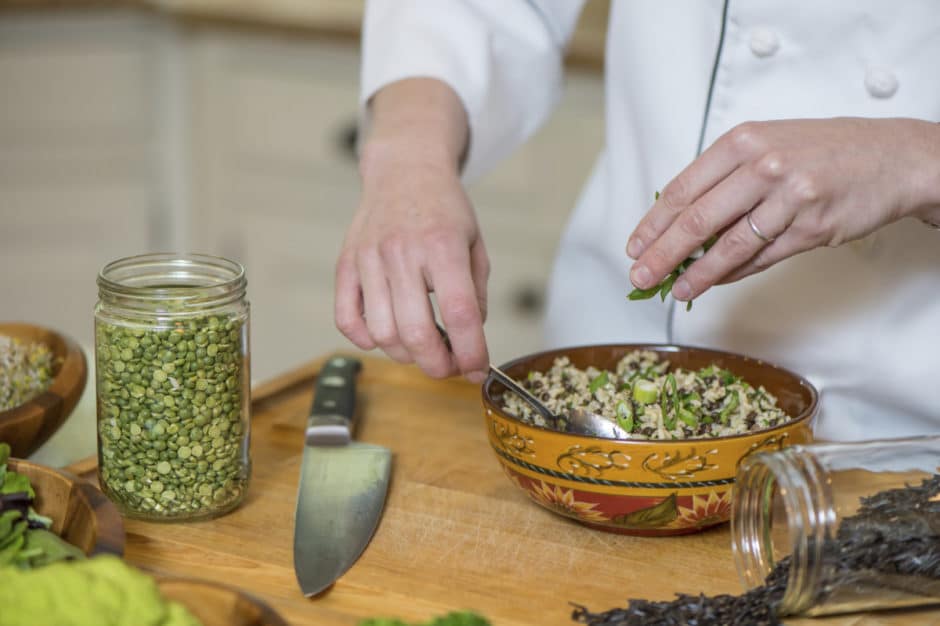
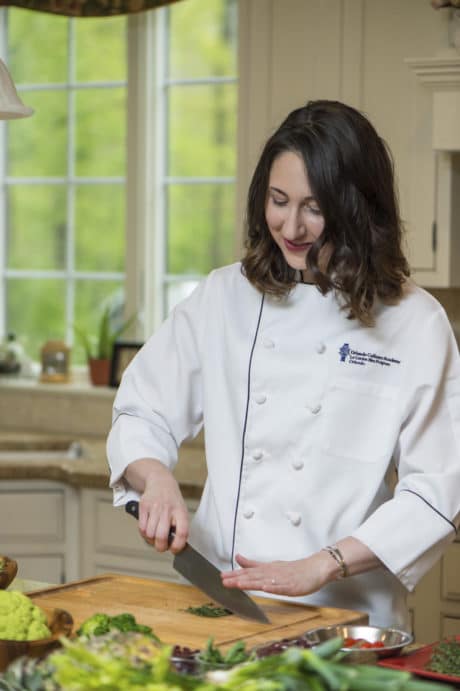
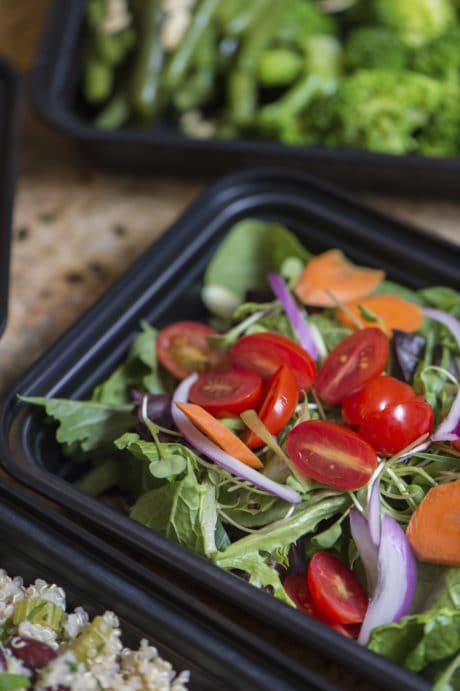
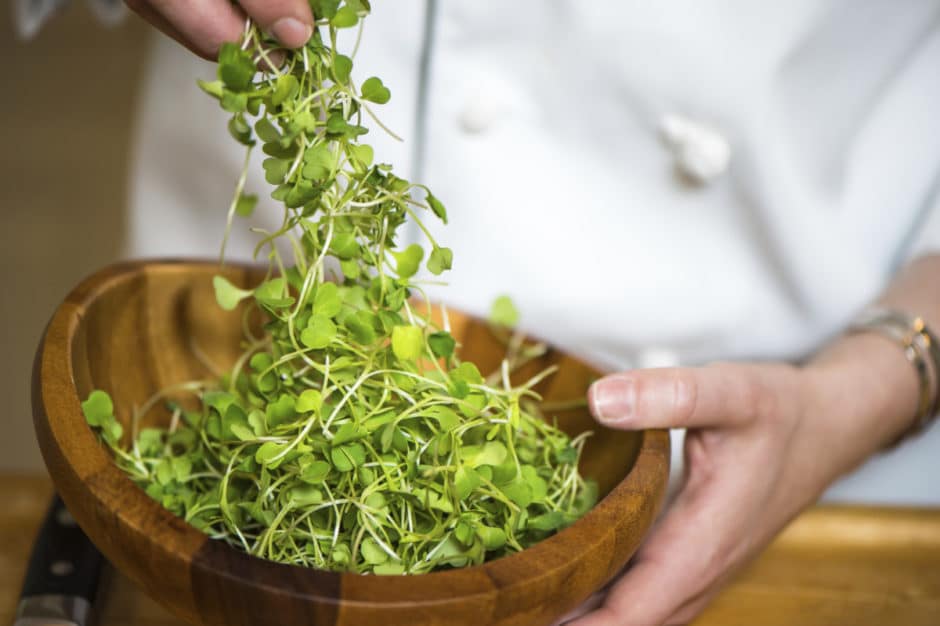
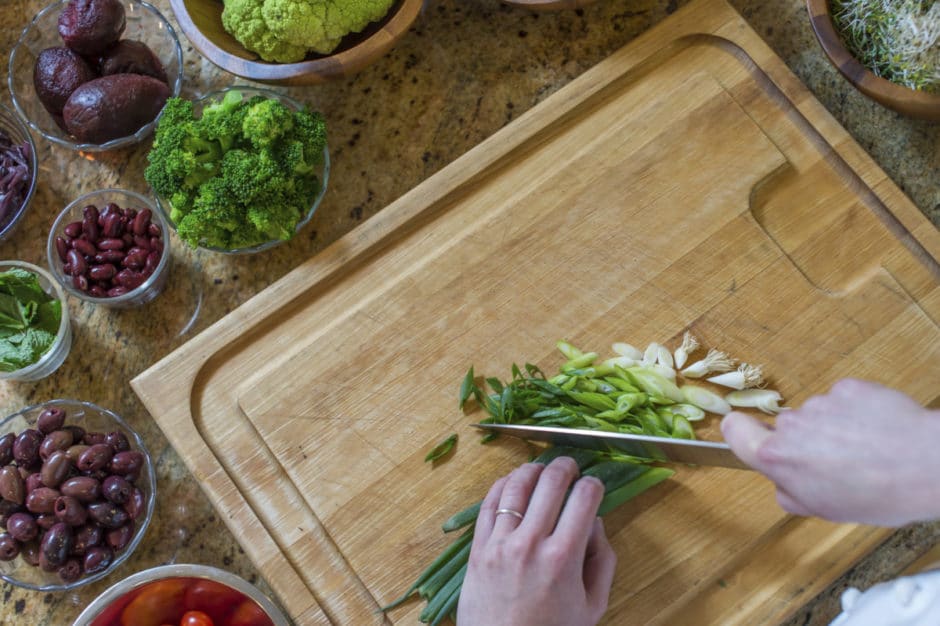
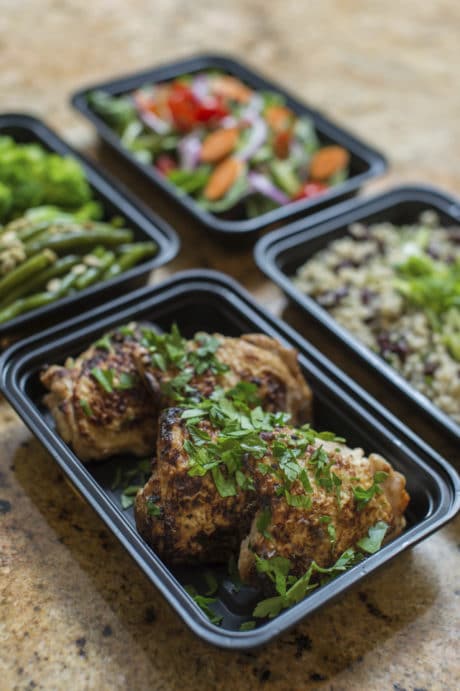
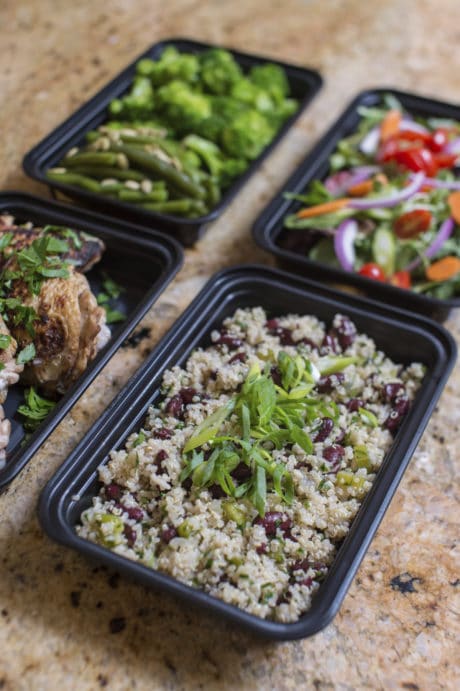
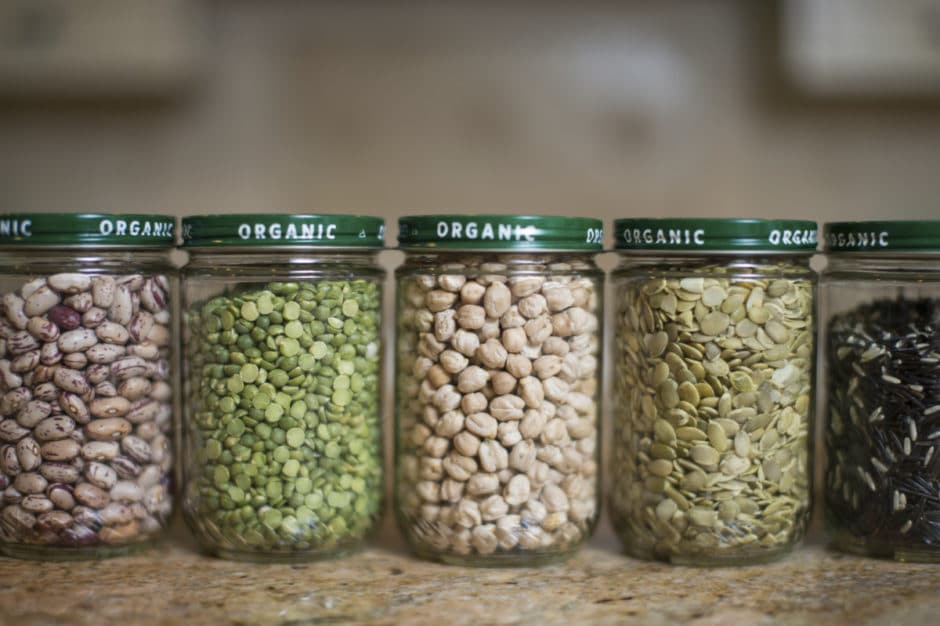


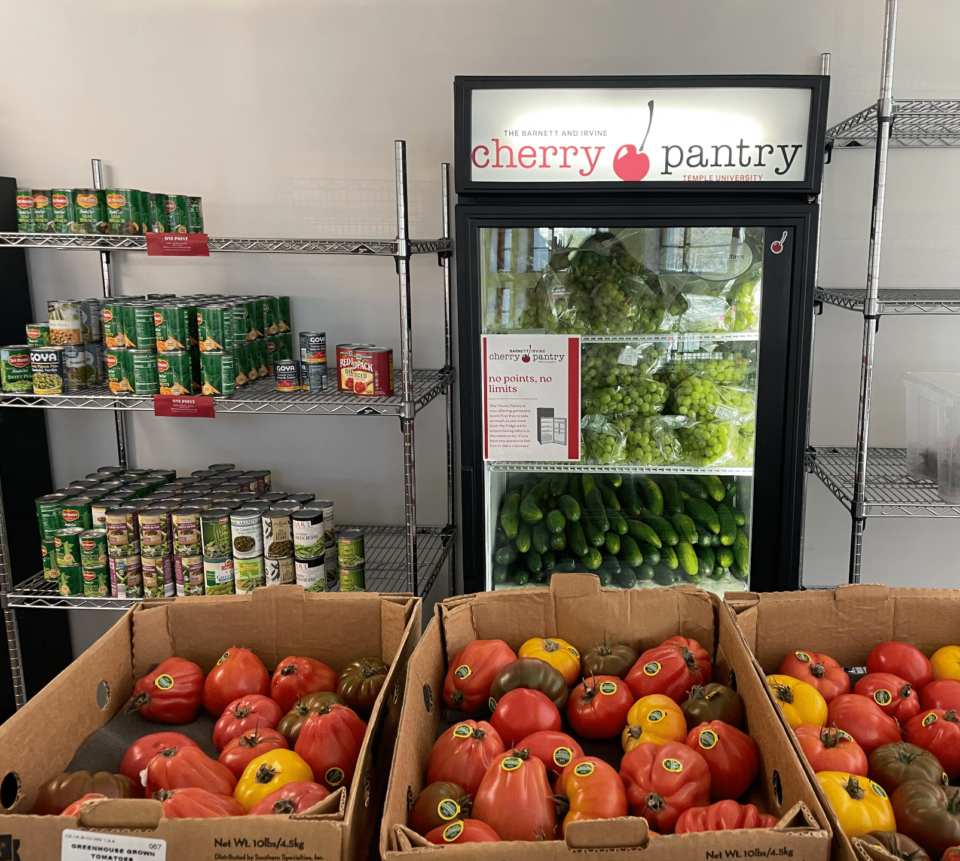

One Comment